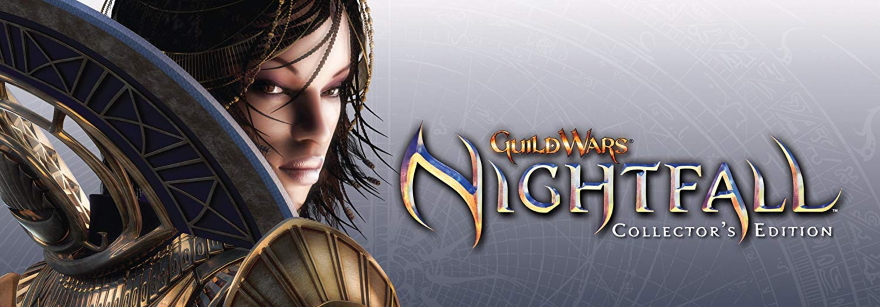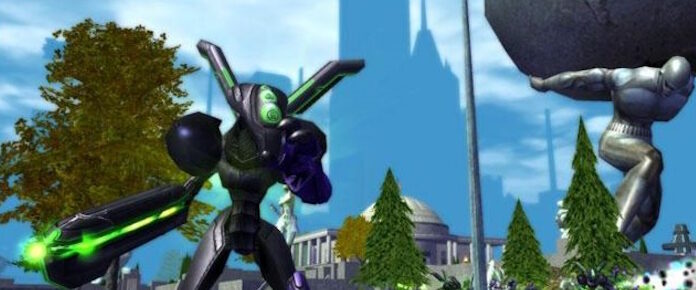
Last week on The Game Archaeologist, we examined the exciting beginnings of Guild Wars, thanks to a trio of ex-Blizzard developers who wanted to build “an MMO for the rest of us.” We left off at the launch of Guild Wars in April 2005, saying that the title amassed a million sales by summer of that year.
But that was, of course, only the beginning.
To kick off today’s look at the enduring legacy of Guild Wars, we need to talk about one more unique concept of this game that I deliberately avoided talking about last time. That concept could be summed up in a single word:
Campaigns.
The money campaign
Before Guild Wars launched, one of the most common questions that ArenaNet fielded was how the studio expected to make any money without subscriptions or (it was implied) microtransactions. Box sales are well and good for an initial chunk of cash, but live services demand a constant revenue stream. How would Guild Wars accomplish that?
For the answer to that, we look to the actual name of the 2005 released game. It wasn’t Guild Wars — it was Guild Wars Prophecies. What players were buying was a standalone campaign that included all of the game’s classes, skills, and initial story arc. But instead of expansions, an MMORPG staple by then, ArenaNet chose to duplicate the campaign idea for future releases.
The idea was to release a new standalone campaign about every year after launch. Each campaign would host the core classes, additional classes and skills, and a new storyline. All of them connected players together in the same community but offered each person the ability to just own one campaign — or collect them all. The hope was that box sales of these subsequent campaigns would drive the revenue that ArenaNet needed.
Almost a year after Prophecies launched, ArenaNet released Guild Wars Factions, an Asian-themed campaign. The next campaign, the Egyptian-themed Nightfall, came sooner than expected in October 2006. The plan for sales to keep revenues high seemed to be working, too, as the series would climb to an astounding six million units sold.
A change of plans
ArenaNet started work on the next campaign, called Guild Wars Utopia, but by 2007 it abruptly switched tracks. Utopia was cancelled and a first-ever expansion (August 2007’s Eye of the North) was rolled out instead. Following that, all work on future campaigns were put on hold.
So what was going on? Did the company fall into dire straights or lose faith in its business model? In actuality, the developers and management had decided that it would be smarter to refocus efforts on creating a full-fledged MMORPG sequel to the game, and so resources were shifted over to begin work on Guild Wars 2. Another factor was that the addition of more and more skills with each campaign was creating a game that ultimately would be impossible to balance. Just ask any collectible card game creators about why they retire old sets instead of keeping every single card made in play forever.
Guild Wars 2 would take several years to complete, however, and Guild Wars had to continue to keep its community busy and happy until then. Smaller content updates and various in-game festivals were rolled out, and new players trickled in all of the time thanks to all-in-one retail boxes.
With Guild Wars 2 on the horizon, ArenaNet triggered Guild Wars’ last big hurrah in 2010. It was called Guild Wars Beyond, serving to tie up loose ends from the game’s story arcs and lay the foundation for the sequel. Players were also given incentive to grind certain achievements in order to fully stock the new Hall of Monuments. Each Guild Wars achievement earned for this would translate into a perk (such as a cosmetic or a pet) for the sequel).
That was it. Supposedly. With Guild Wars 2’s launch in 2012, the community flocked to an open-world Tyria and Guild Wars was left to die.
A spark of life
Except that it wasn’t. While many people expected Guild Wars to wither and ArenaNet to shut off its servers, neither happened. Sure, its population declined significantly, but there were people who stuck around. Even better, ArenaNet kept the servers up in a maintenance mode, allowing anyone to jump in and experience all of the quests, stories, and festivals. The fact that the game was designed to be as inexpensive as possible to operate meant that it wasn’t as high of a financial drain as other older MMOs would be.
And that’s how Guild Wars existed for several years, in a relaxing retirement that could still be enjoyed for nostalgia or discovery reasons. Then the absolutely unexpected happened: ArenaNet started developing for the original title once more.
In May 2018, ArenaNet released a graphics update for the client. This was soon followed by another patch in July that improved the inventory system. These quality-of-life patches continued throughout 2019, although one late in the year seemed to break part of the game. None of these updates delivered new stories or campaigns, but it was still heartening to see an old title like this still getting love and support.
As for ArenaNet’s founding trio, the three moved on to new venues over time. Jeff Strain was the first to leave in 2009, heading off to form Undead Labs (State of Decay). Patrick Wyatt left in 2010 for stints at En Masse Entertainment and Undead Labs before finding his current position at Amazon Games. As for Mike O’Brien, he continued to helm the Guild Wars franchise up through October 2019. Following a difficult year of bad publicity and calls for his resignation, O’Brien abdicated his role as president and went off to be a programmer at ManaWorks.
And that’s where we are today. While diminished in population and name recognition, Guild Wars still holds a special place in many gamers’ hearts. Its clever design, radical business model, and artistic style made this an MMO that will be remembered for all time.
 Believe it or not, MMOs did exist prior to World of Warcraft! Every two weeks, The Game Archaeologist looks back at classic online games and their history to learn a thing or two about where the industry came from… and where it might be heading.
Believe it or not, MMOs did exist prior to World of Warcraft! Every two weeks, The Game Archaeologist looks back at classic online games and their history to learn a thing or two about where the industry came from… and where it might be heading.

















